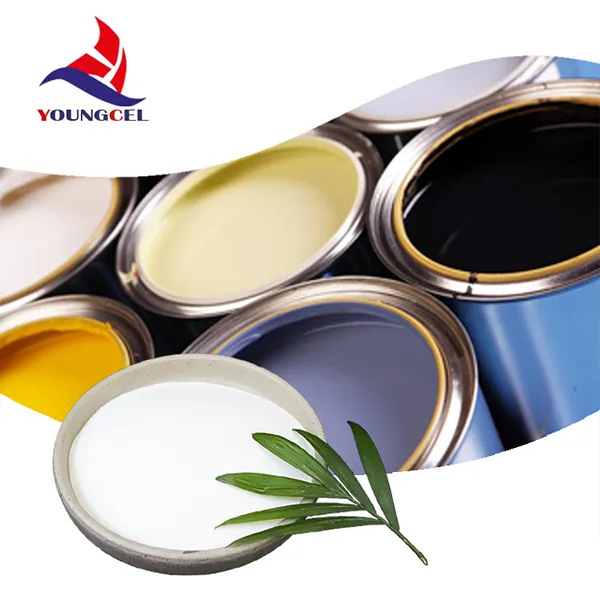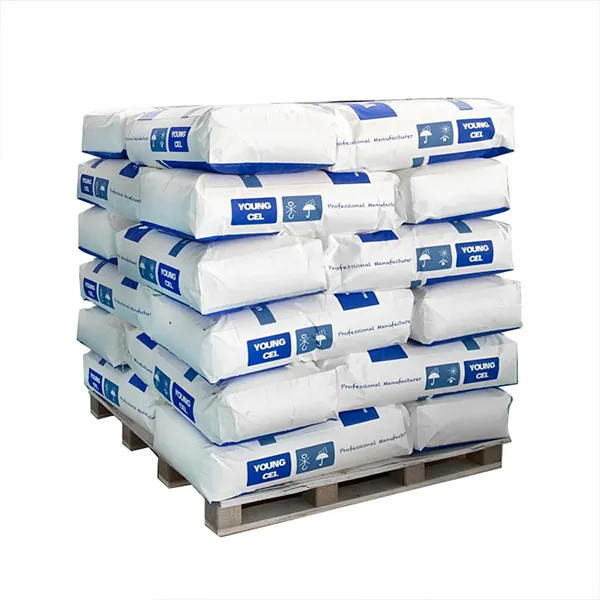- Introduction to hydroxypropyl methylcellulose 2208
and its importance in modern industries - Technical characteristics and advantages over other cellulose ethers
- Comparative analysis of leading hydroxypropyl methylcellulose 2208 manufacturers
- Customized formulation solutions for specific industrial applications
- Applications and impact in construction, pharmaceuticals, food, and cosmetics
- Case studies demonstrating successful uses of hydroxypropyl methylcellulose 2208
- Conclusion: hydroxypropyl methylcellulose 2208’s role in driving industry innovation

(hydroxypropyl methylcellulose 2208)
Introduction: The Significance of hydroxypropyl methylcellulose 2208
hydroxypropyl methylcellulose 2208, also referred to as HPMC 2208, has rapidly become a cornerstone material across diverse industries, including construction, pharmaceuticals, food processing, and personal care. As an advanced non-ionic cellulose ether, it is praised for its excellent water retention, thickening ability, and film-forming properties. These attributes enable HPMC 2208 to optimize formulations, enhance final product attributes, and drive operational efficiencies. In high-demand applications, hydroxypropyl methylcellulose 2208 ensures stable performance under variable temperature and pH conditions, helping industries overcome technical barriers that traditional additives cannot address. The global market for HPMC is estimated to exceed USD 2.2 billion by 2027, with 2208 grades accounting for more than 35% due to their superior functionality. As industries face stricter quality and sustainability standards, the uses of hydroxypropyl methylcellulose in specialized formulations have never been more prominent.
Technical Superiority: Advanced Properties of HPMC 2208
At the molecular level, HPMC 2208 features a precisely balanced hydroxypropoxy and methoxy substitution, delivering both high reactivity and controllable viscosity. Its water solubility profile ensures consistent solutions even at low concentrations, thereby reducing the cost per dose while maintaining product integrity. In construction mixes, HPMC 2208 provides outstanding water retention (>98%) and extended open times by up to 45 minutes, which is nearly 30% higher compared to standard methylcellulose products. In the pharmaceutical sector, its low toxicity (LD50 > 5g/kg) and inert nature make it a preferred excipient for controlled-release tablets and ophthalmic formulations. Moreover, the 2208 variant is known for its lower gelation temperature (60-75°C), which increases its compatibility with sensitive ingredients and systems. The advanced rheological behavior of HPMC 2208 also minimizes segregation in cementitious systems, ensuring premium workability and adhesion.
Manufacturers Compared: Performance & Quality Benchmarks
The market for hydroxypropyl methylcellulose 2208 is led by several global manufacturers distinguished by purity, viscosity range, and application-specific grades. To help buyers select the optimal supplier, the following table summarizes key performance indicators across major brands:
| Manufacturer | Purity (%) | Viscosity (mPa.s, 2% sol) | Water Retention (%) | pH Stability Range | Customization Support | Global Presence |
|---|---|---|---|---|---|---|
| Dow Chemical | >99 | 4,000–75,000 | 98.5 | 4–11 | Yes (R&D Labs) | 50+ countries |
| Ashland | 98.7 | 3,500–65,000 | 98.2 | 3.5–10 | Yes | 40+ countries |
| Kima Chemical | 99 | 5,500–70,000 | 98.7 | 4–10.5 | Customizable viscosity & particle size | Asia, EU, NA |
| Shin-Etsu Chemical | 98.5 | 4,500–80,000 | 98.0 | 4–11 | Comprehensive | Worldwide |
This comparison highlights the subtle yet impactful differences in purity, viscosity availability, and technical support, which can significantly affect application outcomes. Buyers are encouraged to select suppliers with robust customization capabilities and proven global logistics for competitive advantage.
Tailored Solutions: Customizing HPMC 2208 for Industry Needs
Recognizing the variation in process requirements, manufacturers offer HPMC 2208 with tailored particle sizes (80–200 mesh), viscosity profiles, and surface treatments. For tile adhesives, enhanced slip resistance and open time extension are achieved by adjusting the molecular weight distribution or by blending with starch ethers. In ready-mix mortars, pre-hydrated, dust-free HPMC 2208 grades ensure rapid dispersion, providing uniform thickening within 90 seconds. Food processors utilize specialty grades with ultra-low levels of heavy metals (<10 ppm) and guaranteed microbial counts (<100 CFU/g) for direct food contact or encapsulation. Pharmaceutical firms favor fine particle forms (median diameter <100 µm) for direct compressibility in tablets. This level of customization ensures end products meet stringent international certifications such as USP, EP, and E410, as well as environmental criteria for Green Building certification.
Industry Applications: Uses of hydroxypropyl methylcellulose in Real-World Contexts
The uses of hydroxypropyl methylcellulose are diverse and continually expanding:
Construction – HPMC 2208 is crucial for producing high-performance tile adhesives, self-leveling compounds, and plaster renders, where it enhances water retention, workability, and crack resistance, reducing repair costs by up to 18% annually for commercial contractors.
Pharmaceuticals – In tablet manufacturing, HPMC 2208 acts as a controlled-release matrix and coating agent, with dissolution rates tunable from 2 to 24 hours—meeting the growing demand for modified-release formulations. Regulatory submissions show batch conformities of 99.6% with HPMC-based delivery systems.
Food Processing – As a vegan alternative to animal-based gelatin, HPMC 2208 is increasingly adopted in plant-based meats, instant soups, and bakery glazes, offering stable viscosity across both hot and cold systems.
Cosmetics – In skin creams and shampoos, HPMC 2208 provides emulsion stability, improves texture, and imparts a smooth sensory touch, contributing to a 30% rise in “clean label” product launches over the past five years.
These data-driven results underline how HPMC 2208 functions as a multi-utility polymer, streamlining processing while exceeding end-user expectations.
Case Studies: Proven Success with HPMC 2208
Case 1: Green Building Skyscraper, Frankfurt
A major developer in Germany opted for HPMC 2208-enhanced mortar for a 40-story sustainable office block. Trials indicated a reduction in water consumption by 17% and near-zero cracking after one year. The application of HPMC-based plasters also accelerated construction schedules by 9 days per floor.
Case 2: Extended-Release Pharma Tablets, USA
A leading pharmaceutical contract manufacturer switched to HPMC 2208 for an anti-inflammatory tablet, leading to a 4.8% improvement in batch uniformity and a dramatic decrease in process-related waste by 12%. The company also reported improved regulatory compliance and competitive advantage in the generics market.
Case 3: Egg-Free Cookies, Japan
A plant-based food processor utilized HPMC 2208 to create an egg-free cookie with outstanding texture and 6 months shelf life, capturing an additional 14% of the vegan snack market in under a year and passing all food safety audits on first review.
Conclusion: hydroxypropyl methylcellulose 2208 in Advancing Industry Standards
The evolution of hydroxypropyl methylcellulose 2208 from a specialty polymer to a globally essential ingredient is a testament to its reliable and versatile performance in demanding settings. Whether in critical construction elements, life-saving pharmaceuticals, innovative foods, or advanced cosmetics, HPMC 2208 stands out for its ability to resolve formulation challenges and boost operational efficiency. With proven data on technical superiority, customization options, robust supplier networks, and real-world application success, it is clear that hydroxypropyl methylcellulose 2208 will continue to underpin new industry standards and inspire further product innovation for years to come.

(hydroxypropyl methylcellulose 2208)
FAQS on hydroxypropyl methylcellulose 2208
Q: What is Hydroxypropyl Methylcellulose 2208?
A: Hydroxypropyl Methylcellulose 2208 (HPMC 2208) is a modified cellulose ether used as a thickener, emulsifier, and stabilizer. It's commonly found in construction materials, pharmaceuticals, and food products. Its properties depend on its chemical composition and viscosity grade.Q: What are the main uses of Hydroxypropyl Methylcellulose 2208?
A: HPMC 2208 is widely used in construction (as tile adhesive and cement additive), pharmaceuticals (tablet coating and control release), and food (as a thickener). It enhances water retention and workability. The versatility of its applications comes from its unique chemical structure.Q: How does HPMC 2208 improve cement-based products?
A: HPMC 2208 increases water retention, workability, and adhesion in cement-based products like mortars and tile adhesives. This leads to better bonding strength and easier application. It also helps prevent cracking due to water loss.Q: Is Hydroxypropyl Methylcellulose 2208 safe in food or pharmaceuticals?
A: Yes, HPMC 2208 is non-toxic, non-allergenic, and approved for use in food and pharma formulations. It acts as a stabilizer and thickener in various edible products. Regulatory approvals depend on regional standards.Q: Are there different grades of HPMC, and how does 2208 differ?
A: Yes, there are several grades of HPMC, such as 2208 and 2910, each with different substitution levels and properties. HPMC 2208 typically has higher hydroxypropyl content than some grades, affecting its solubility and gelation. Choosing the right grade depends on the application's specific needs.-
The Application and Significance of Construction RdpNewsMay.19,2025
-
Industrial Grade HpmcNewsMay.19,2025
-
Building Coating Adhesive Building Coating Adhesive HpmcNewsMay.19,2025
-
Application Of Hpmc For Detergent For Detergent In DetergentsNewsMay.19,2025
-
Application Of Hpmc Cellulose In Cement-Based MaterialsNewsMay.19,2025
-
Application Of High Quality Hpmc For Construction In The Field Of ConstructionNewsMay.19,2025




